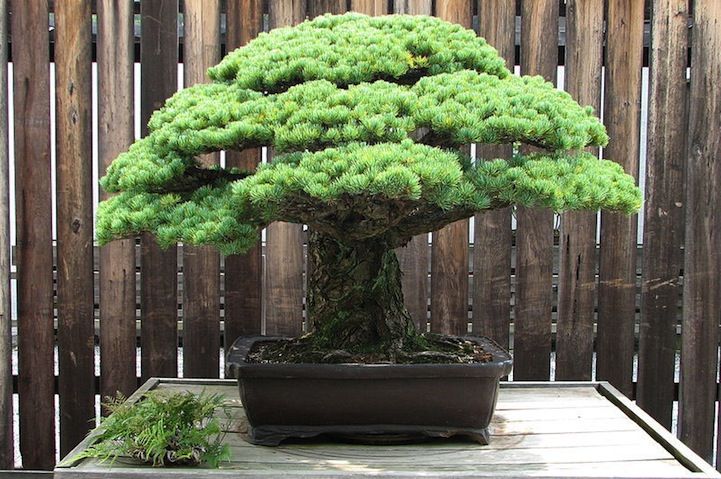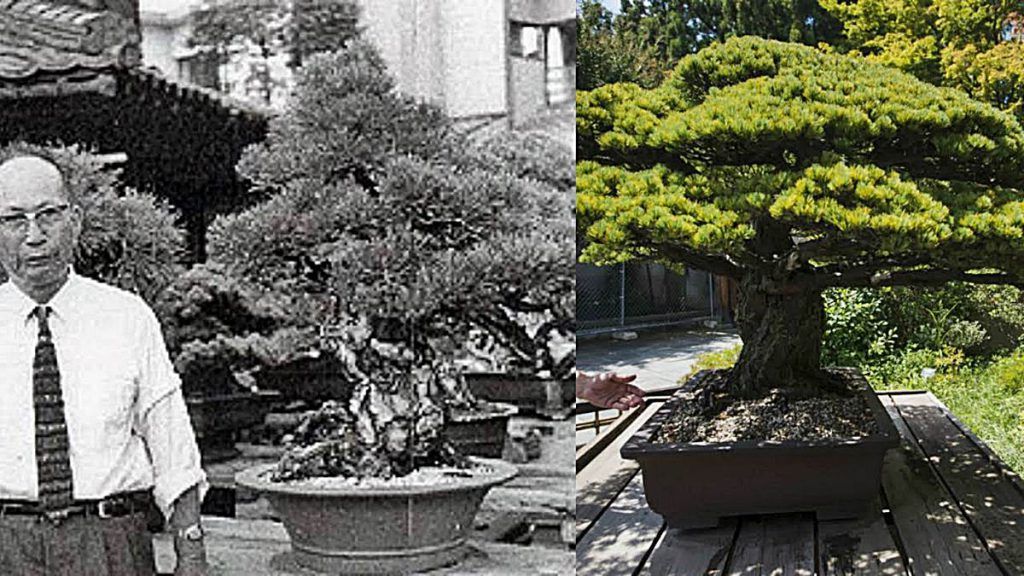The bonsai that survived Hiroshima

The popular surviving bonsai from Hiroshima is priceless, not only because of its age, but also because its branches and trunk were able to survive the brutal devastation caused by the nuclear bomb. It is a small tree, a Japanese white pine, approximately two feet high, with a stout trunk, short strong needles, green and yellow in color, planted in the year 1625. Witness to one of the most tragic moments in Japan’s history, he survived the devastating Hiroshima atomic bomb that caused thousands of deaths during World War II. It is currently in the Bonsai and Penjing of the National Arboretum in Washington, but how it got there is an incredible story…
This bonsai belonged to the Yamaki family and the day the nuclear bomb fell, the bonsai was only 3 kilometers away, so it survived thanks to a wall that served as a shield. In some historical archives on Hiroshima there is a film in the Yamaki nursery where the pine can be seen, unharmed and standing, in the background of the image.
It was donated in 1976 to the Bonsai and Penjing Museum of the National Arboretum in Washington. Sent by a bonsai expert named Masaru Yamaki, as part of a gift of 53 species given to the United States for the bicentennial of the country’s independence, which was celebrated in 1976. But the tree itself “was not ceded due to Hiroshima” says Kathleen Emerson-Dell, who cares for him at the museum, “It was a gift of friendship and connection, the connection of two cultures.”
The 390-year-old surviving bonsai is today considered a symbol of peace and meeting between Japan and the United States.
Little was known about the surviving bonsai until, in March 2001, Shigeru Yamaki and his brother, Akira, went to the museum to visit their grandfather’s tree. Despite the fact that they had never seen the specimen in person and had only heard about it through family stories, they helped the museum to recover the tree’s history.
“I find it incredible that Masaru Yamaki could give a basically priceless bonsai to his enemy and not say a word about it,” said National Bonsai Foundation President Felix Laughlin. “I get emotional just talking about it.”
Yamaki’s tree has been moved to a new Japanese pavilion that has been open since this year.
Source: The Washington Post and Ok Diario
You may also be interested in…
Categories
Bonsai cultivation and care (60)
Bonsai gift (2)
Bonsai pests and diseases (7)
Bonsai repotting (3)
Bonsai species (1)
bonsai substrates (2)
Bonsai summer (1)
bonsai tools (1)
Bonsai work (13)
Ceramic pots (3)
Chinese culture (1)
Chinese culture (2)
Coniferous bonsai (2)
Conifers (1)

